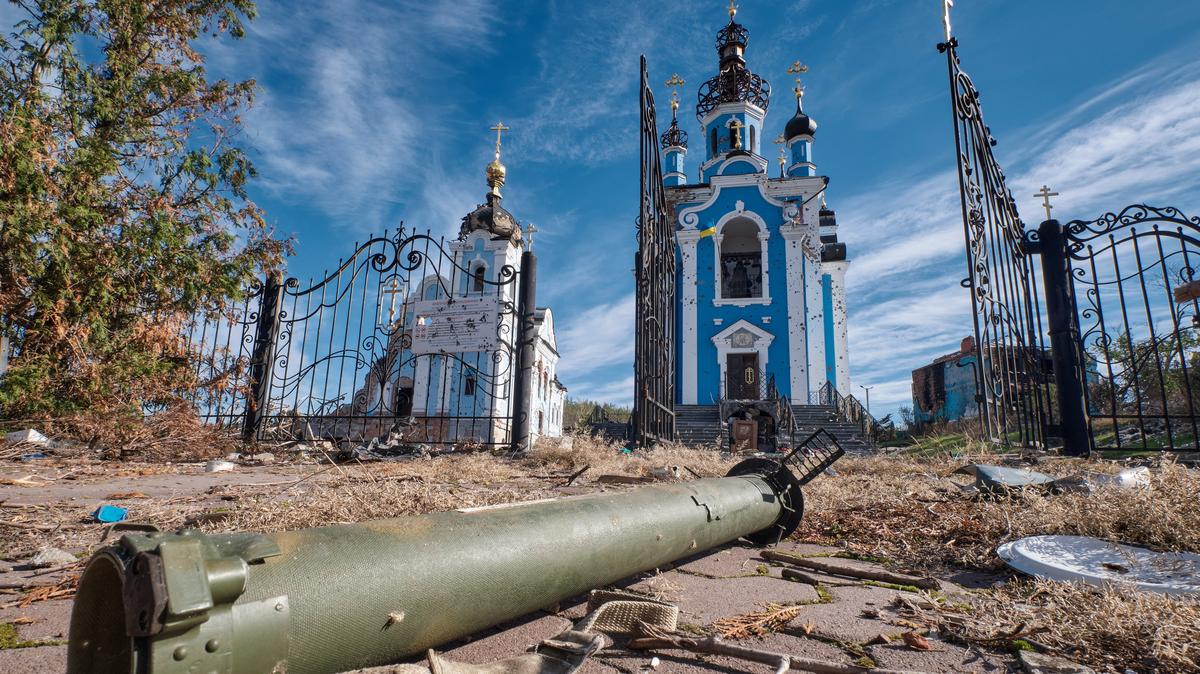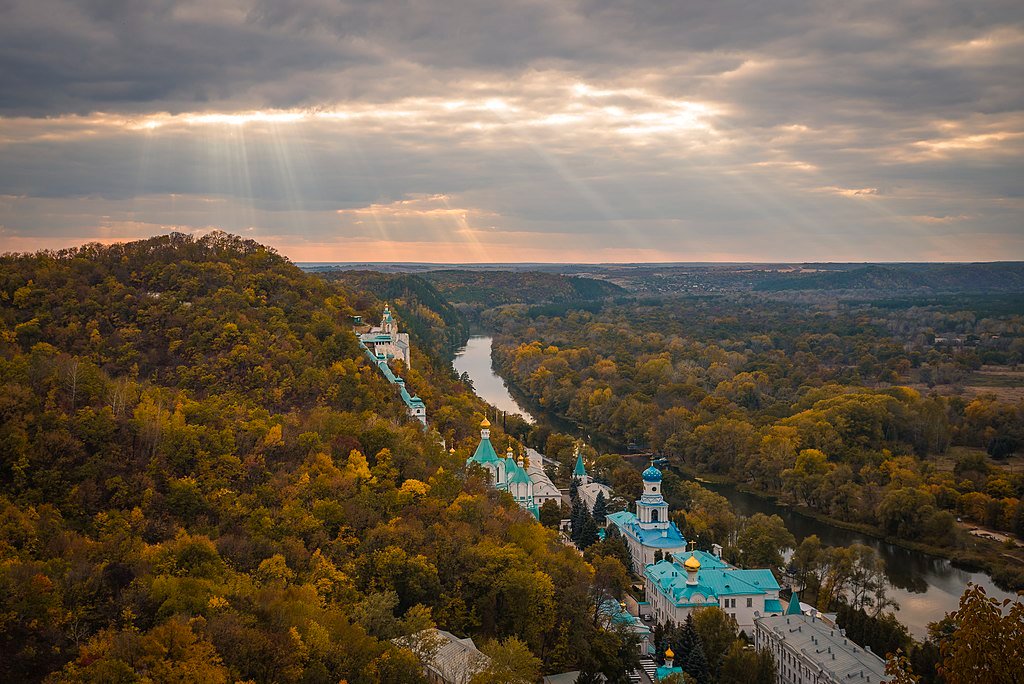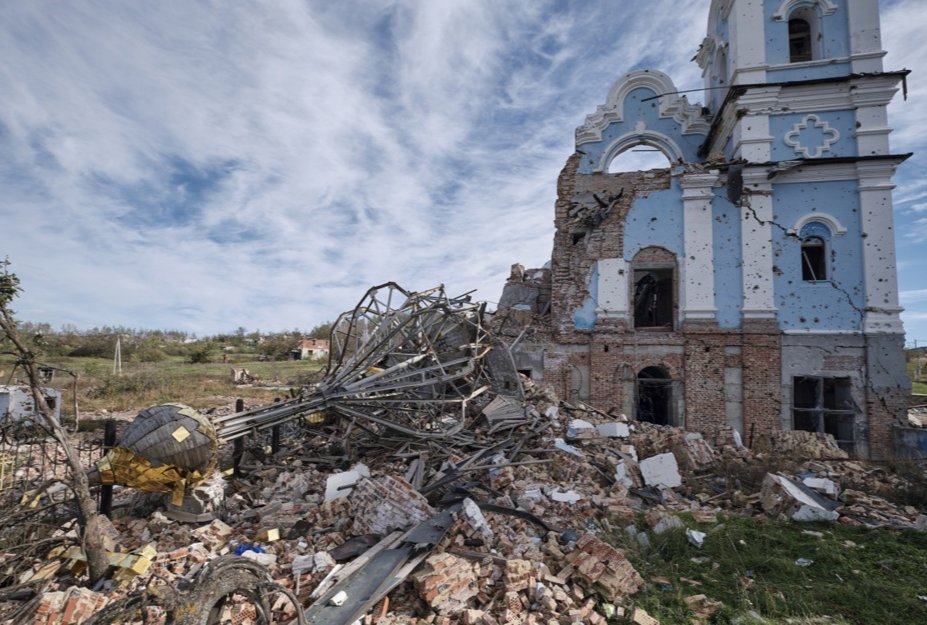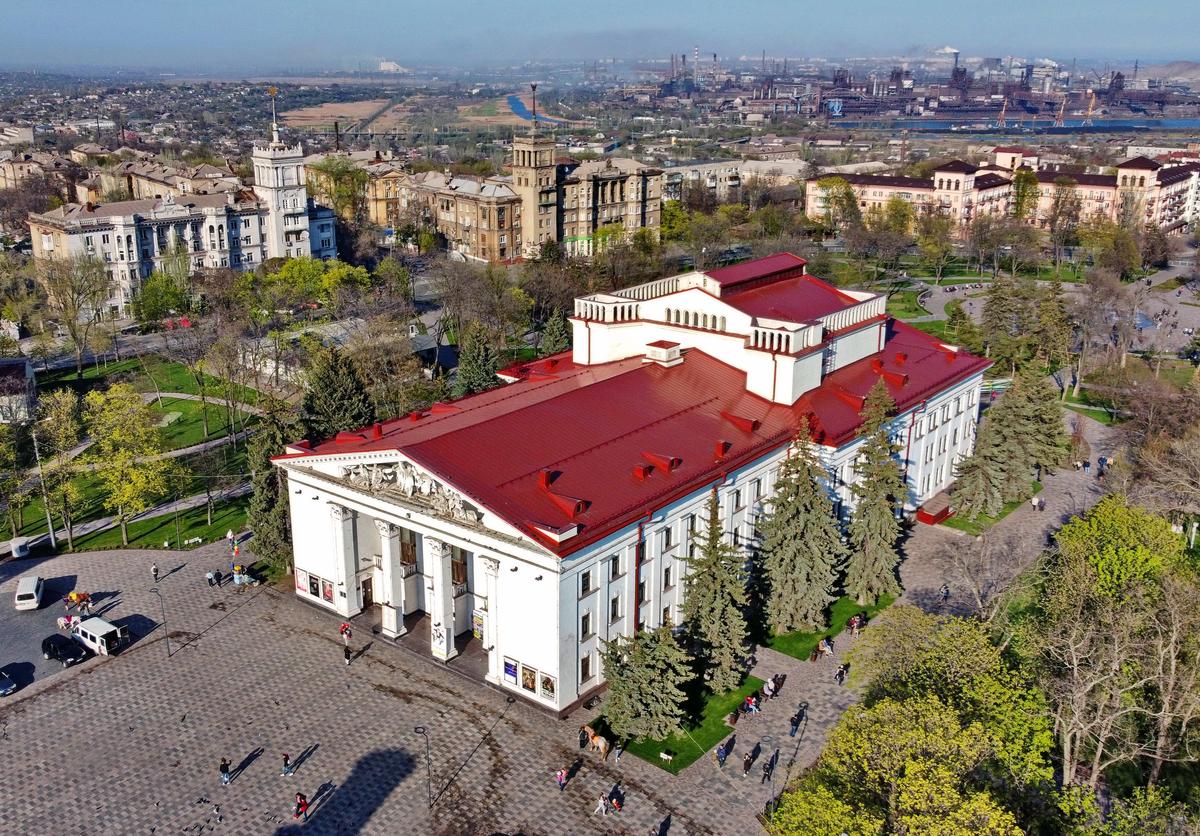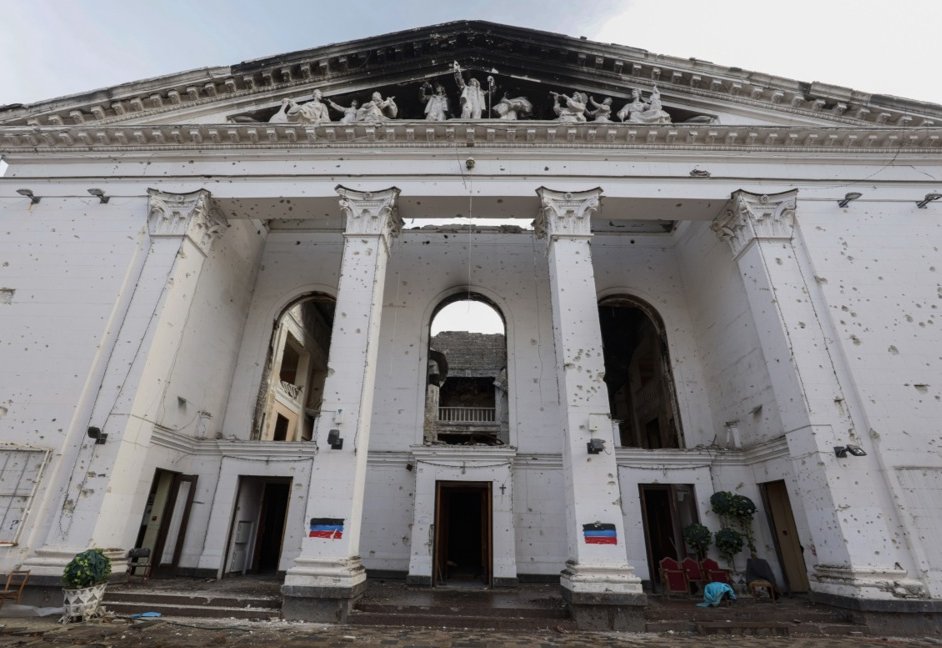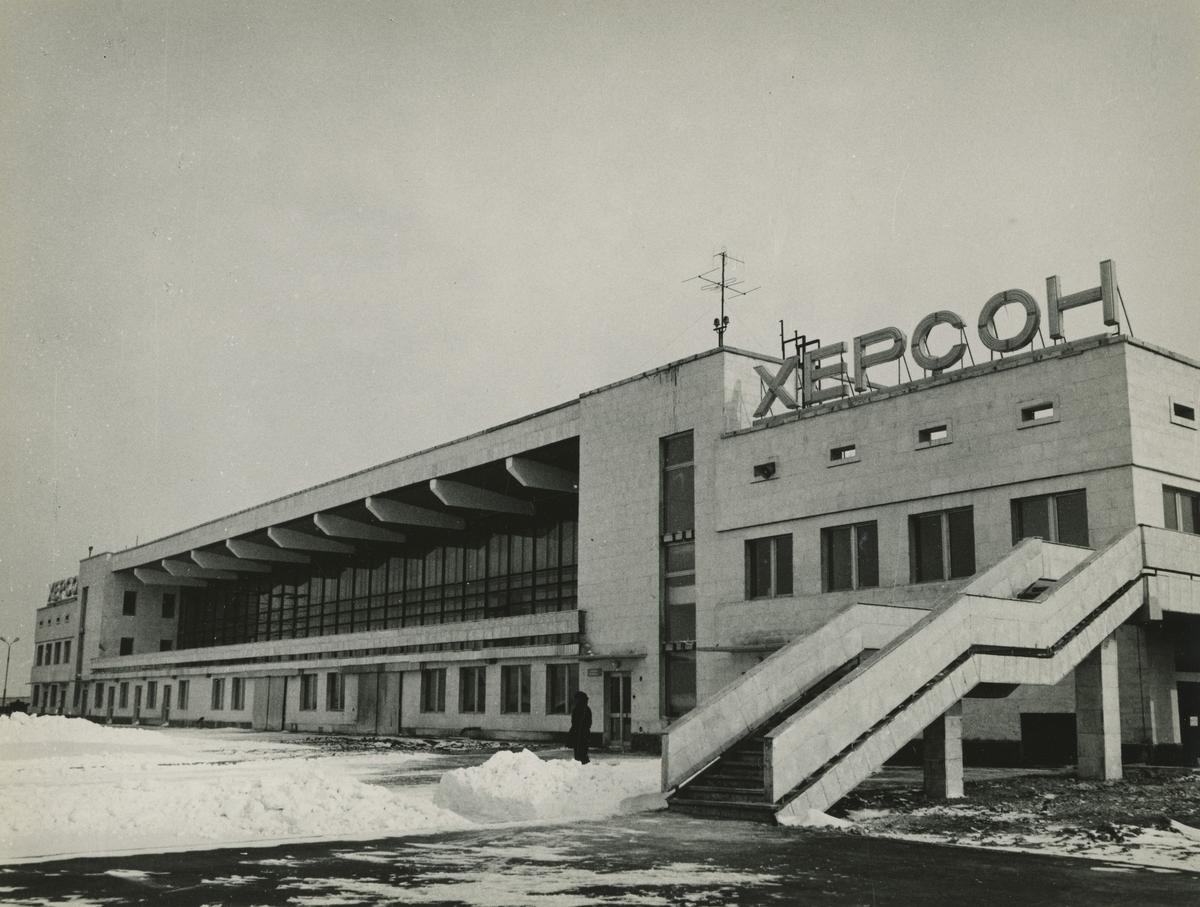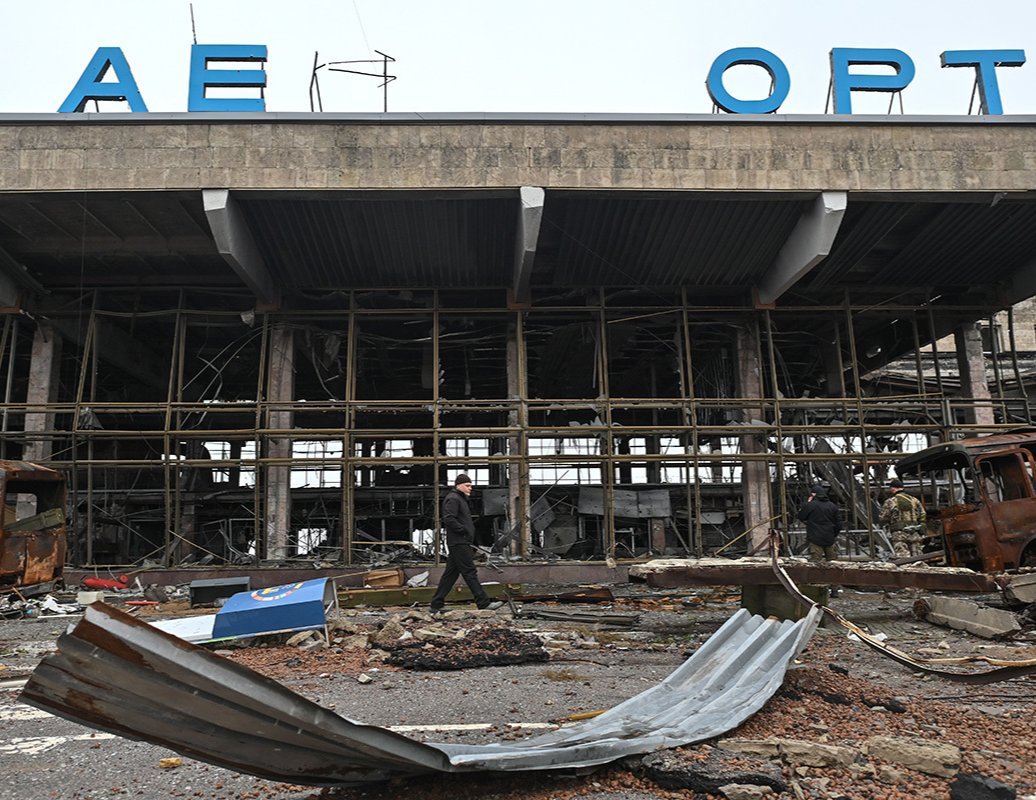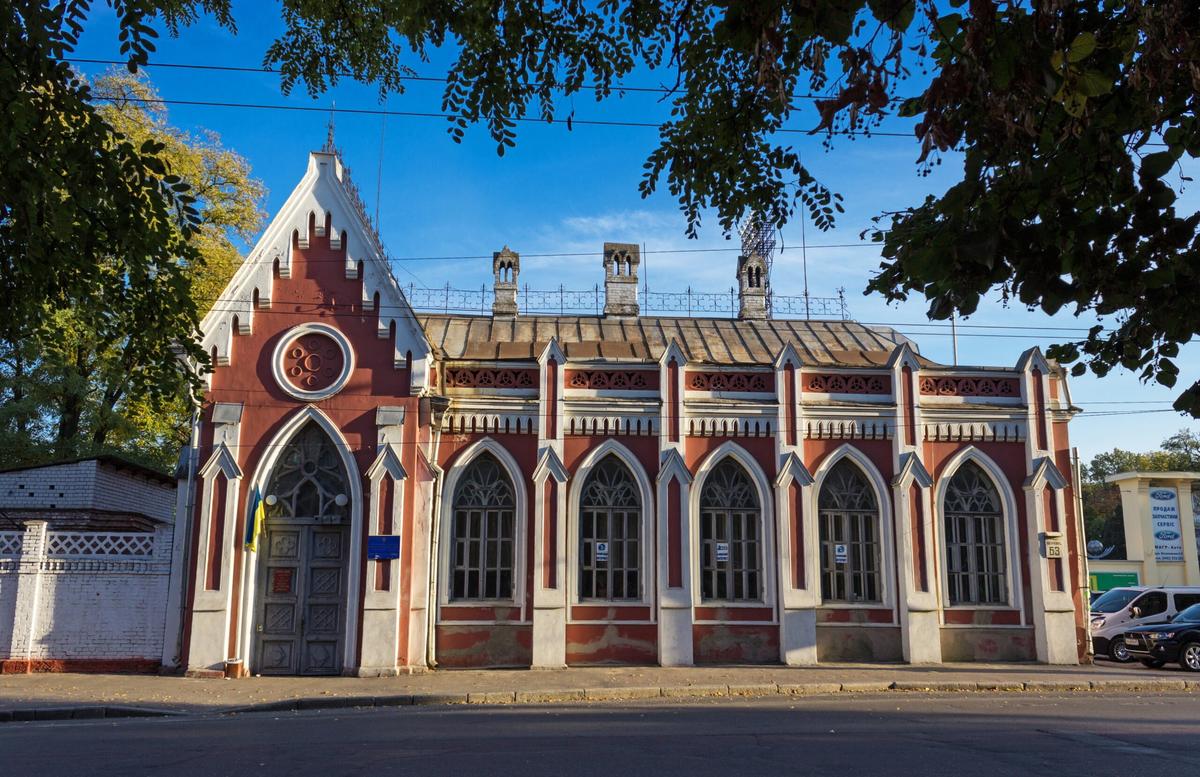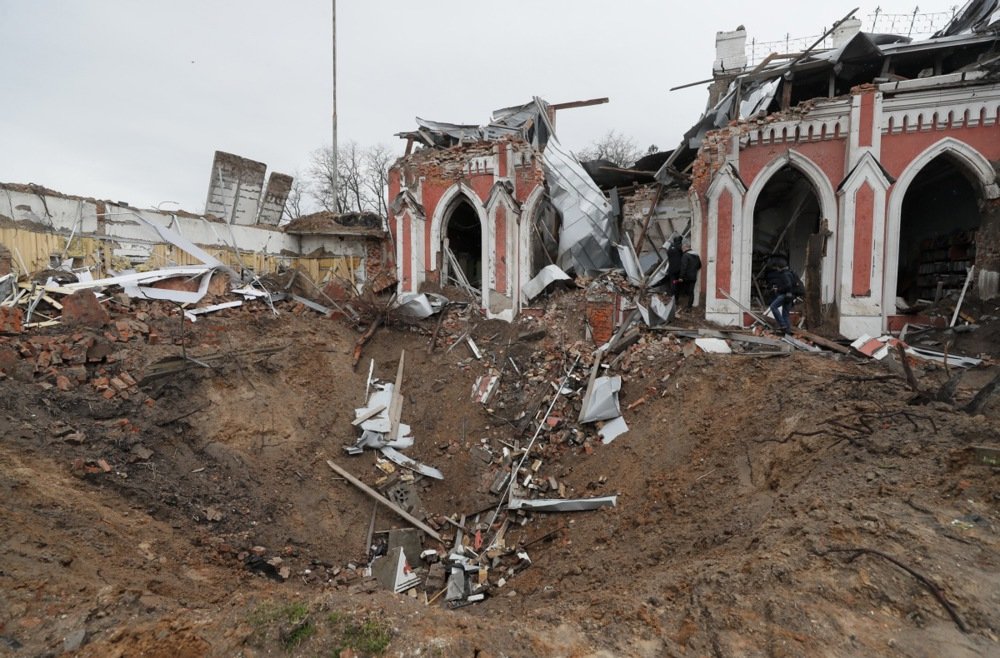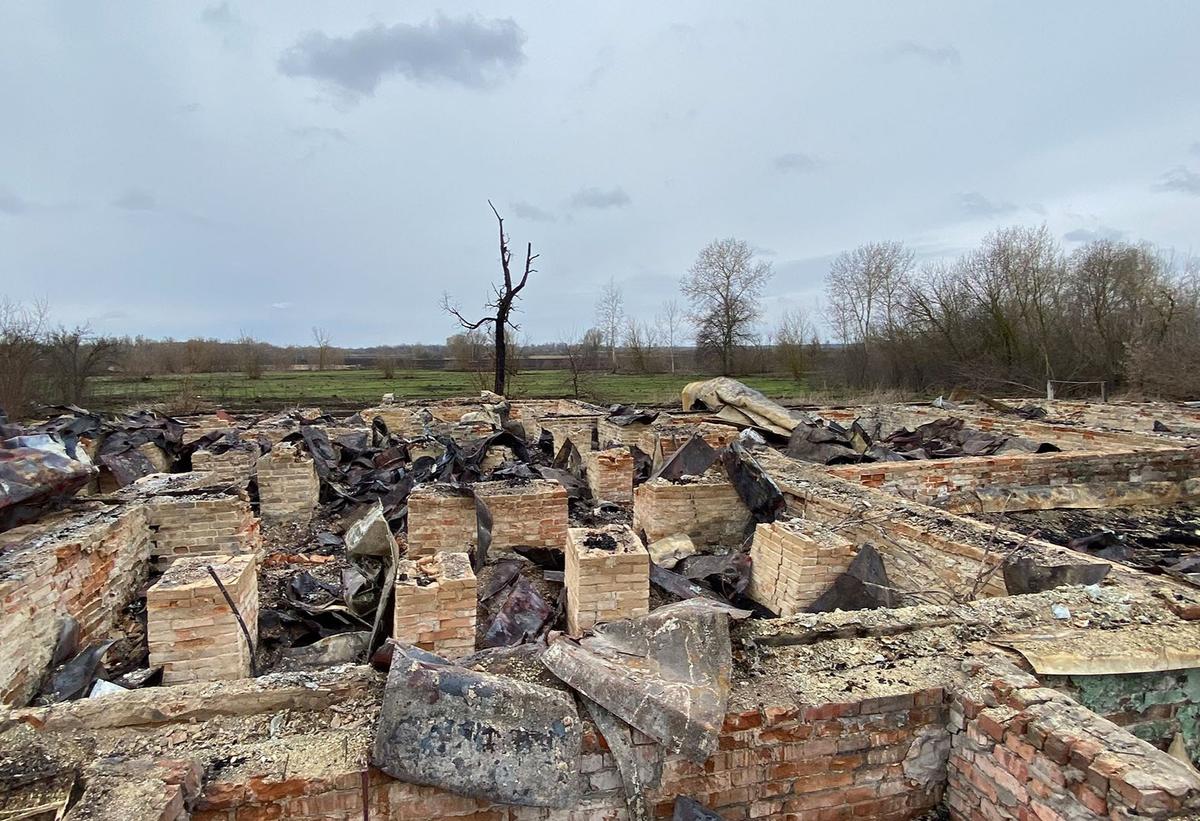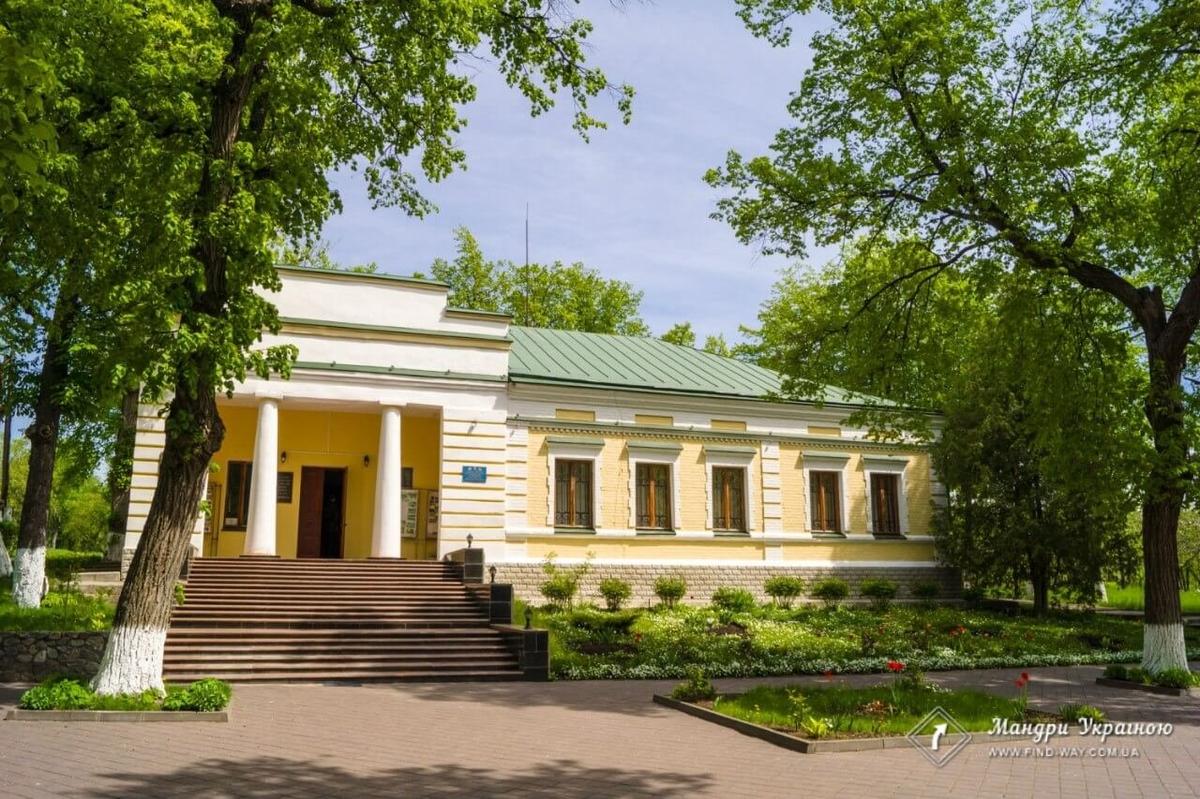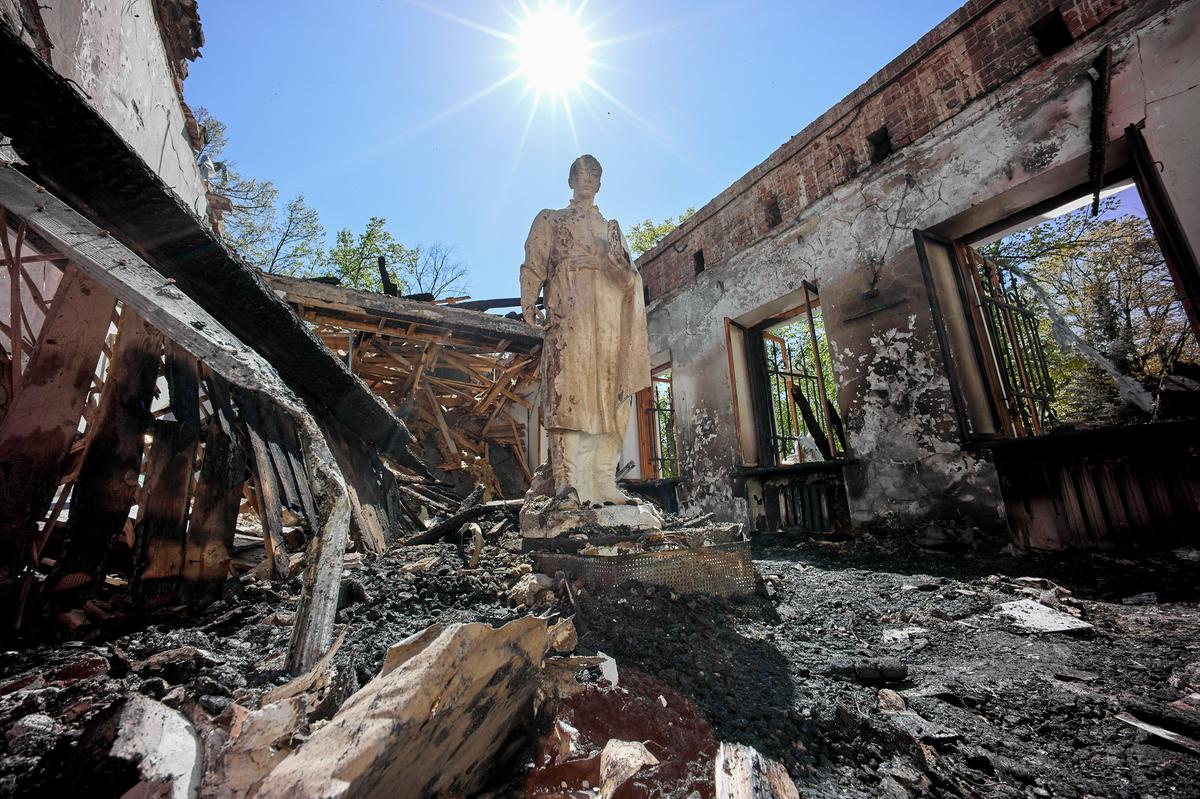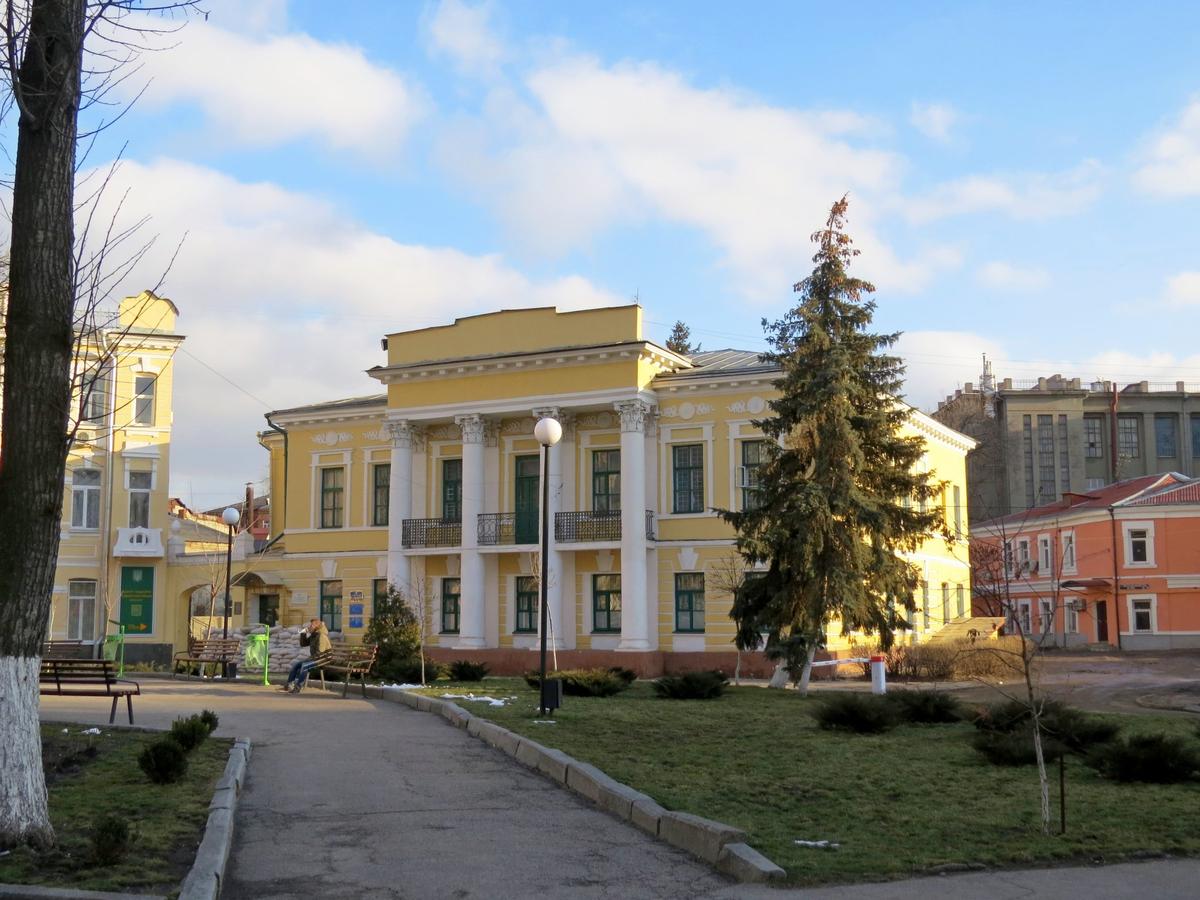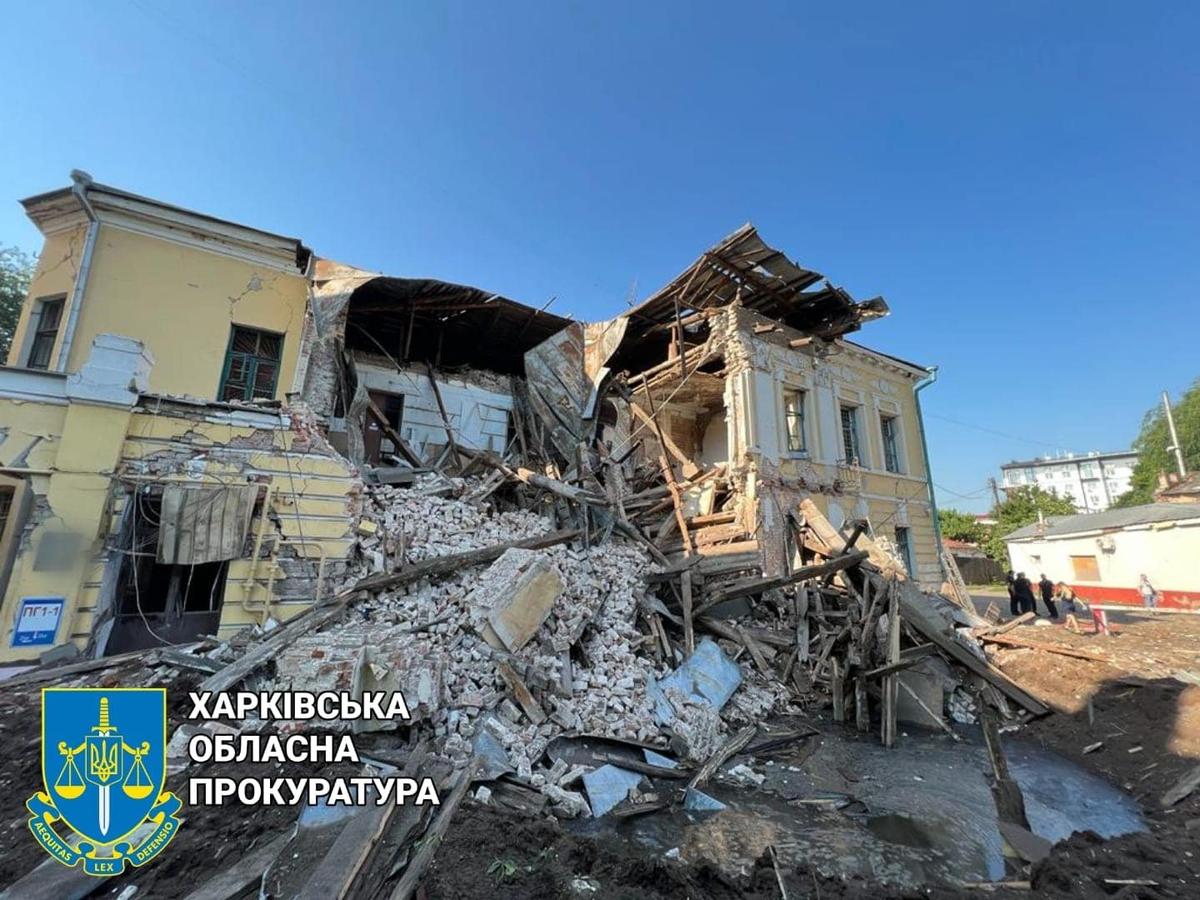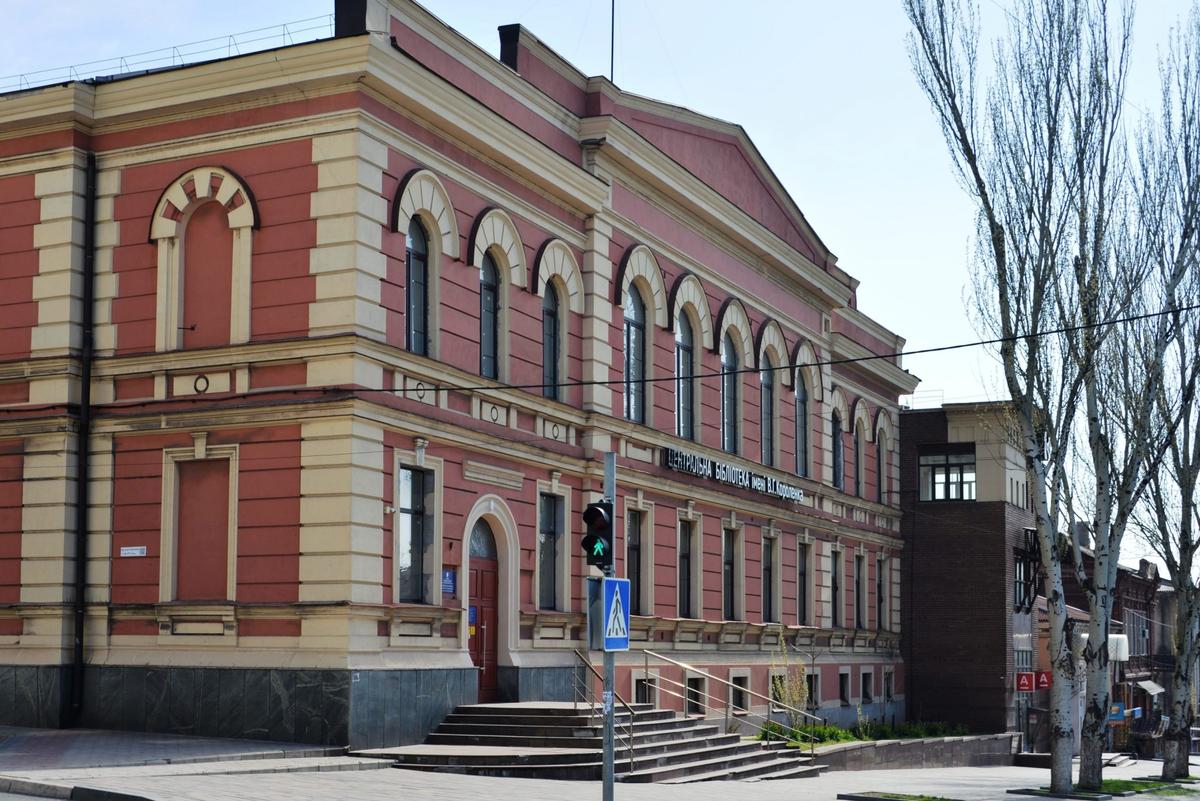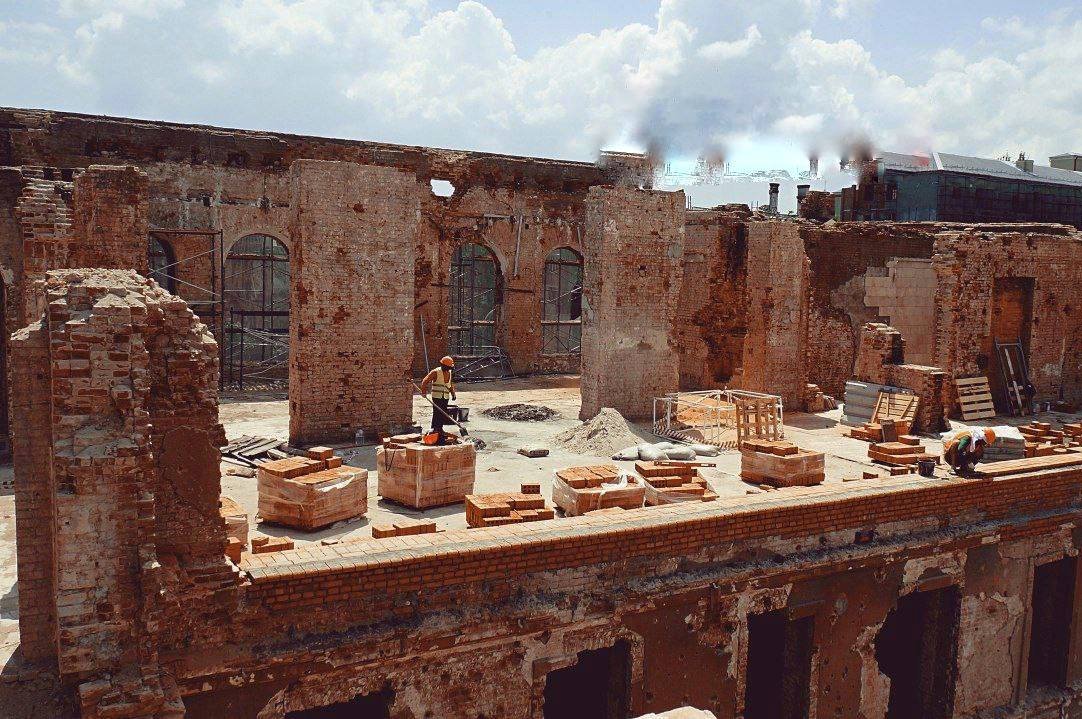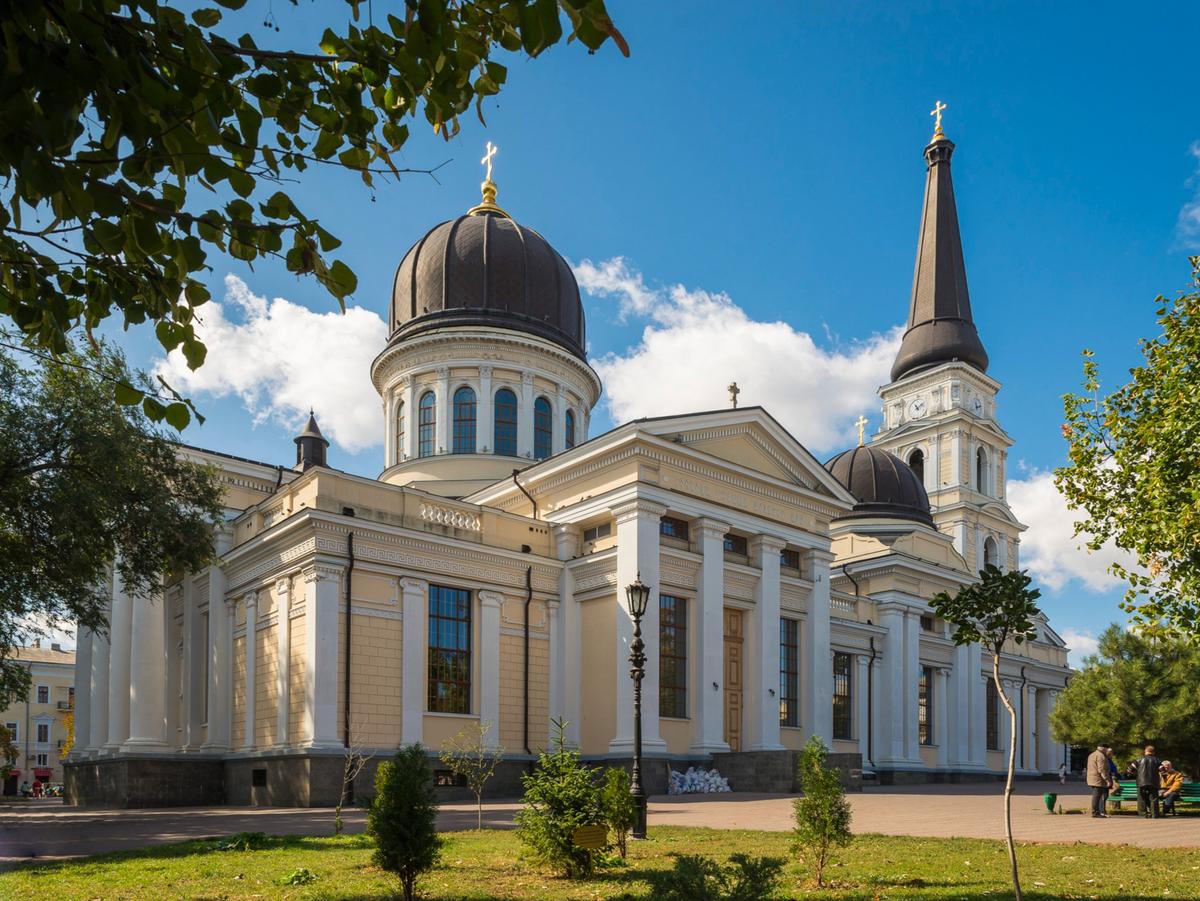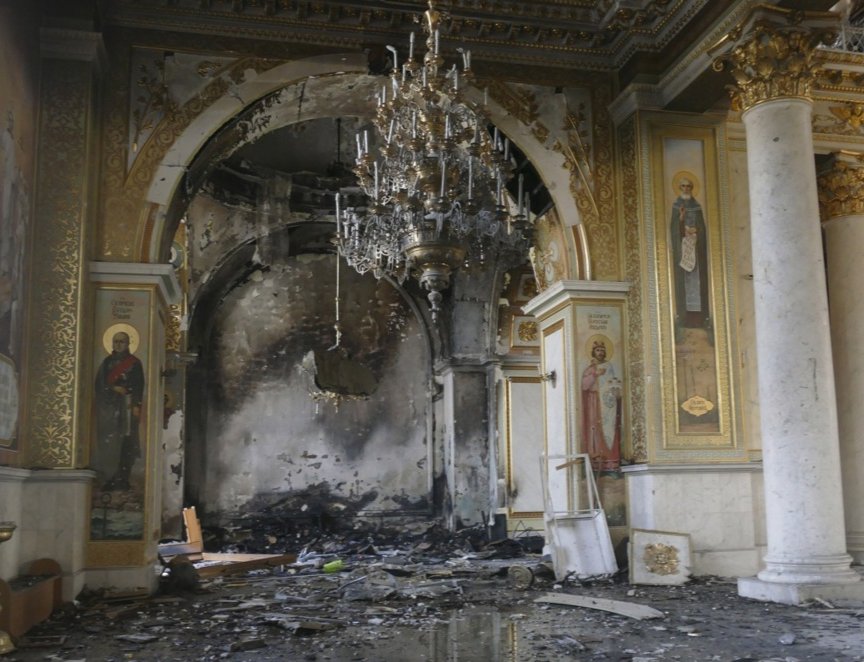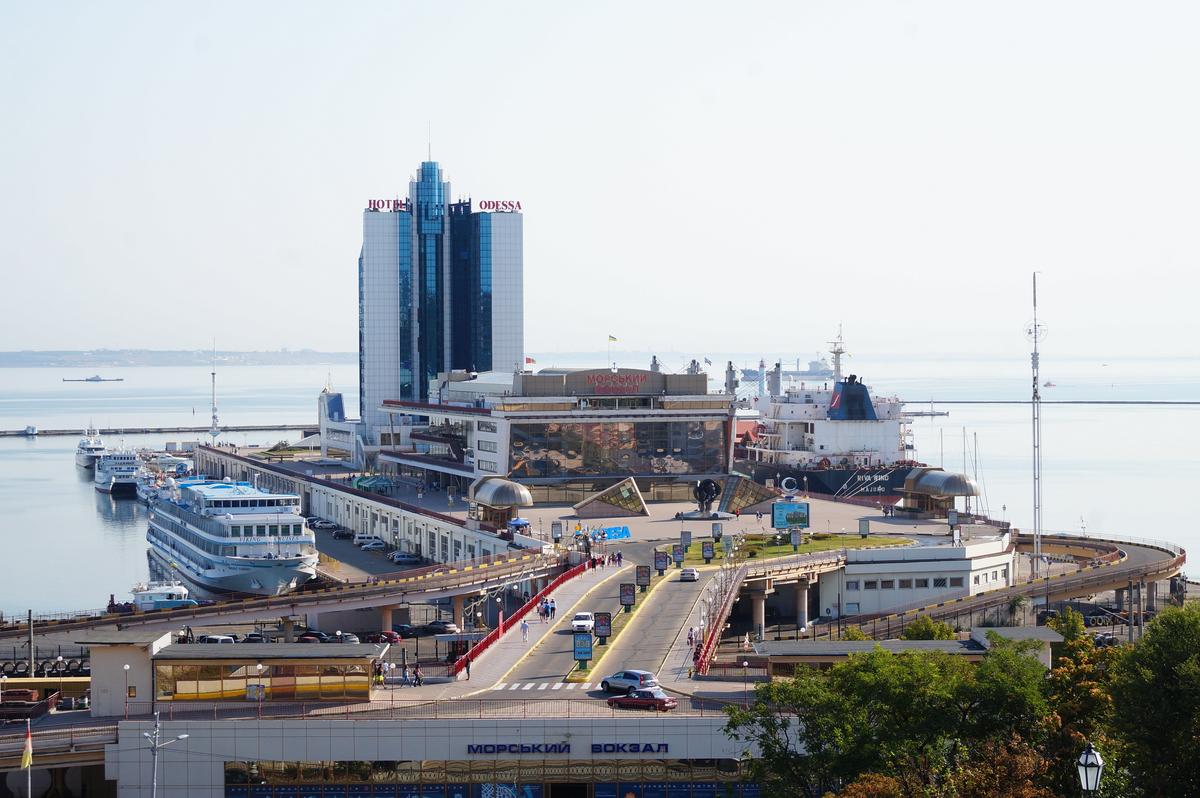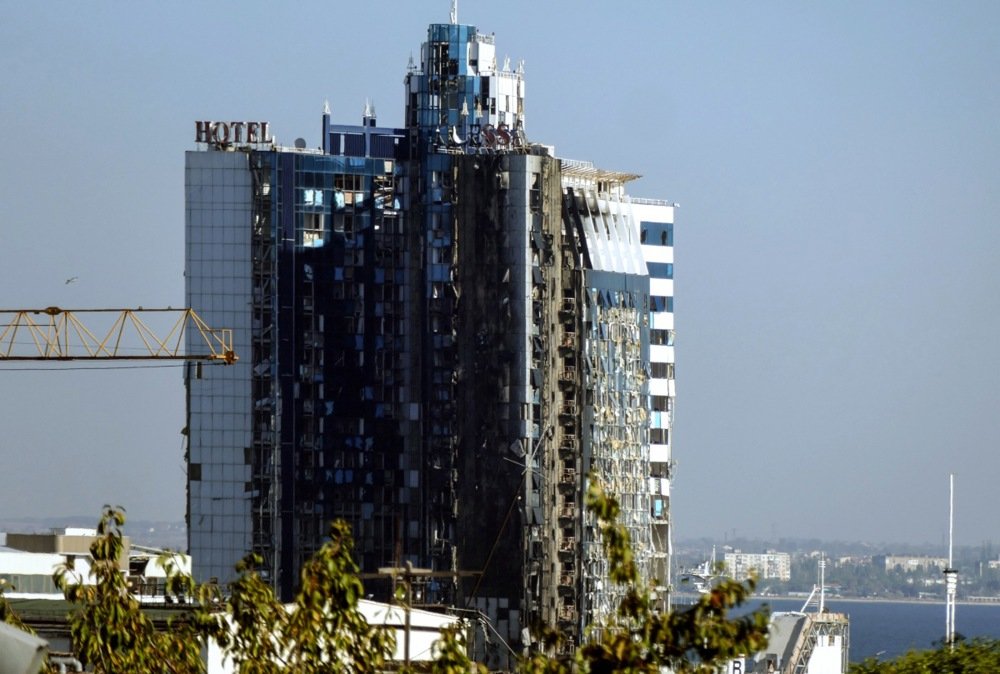The Fine Arts Museum in the proudly multiethnic Ukrainian port city of Odesa was damaged in the early hours of Monday when a Russian missile landed right outside the museum’s main building, the elegant 19th century Potocky Palace, leaving a large crater in the road.
While the building sustained superficial damage such as smashed windows and broken plaster, Odesa Governor Oleh Kiper was able to assure the public that all the museum’s artefacts had long been removed and put into storage.
The profound damage to Ukrainian cultural heritage caused by the Russian invasion is inevitably overshadowed by the horrendous death toll, civilian casualties and attacks on vital infrastructure, but that doesn’t lessen the long-term impact of the destruction of buildings such as the Sviatohirsk Lavra of the Holy Dormition.
According to UNESCO, at least 295 Ukrainian cultural sites have been damaged or destroyed since the war started, while Ukraine’s Ministry of Culture puts that number at a far less conservative 763.
Russian troops have been regularly attacking not only military targets, but also civilian ones such as museums, monuments, and churches. Drawing up an authoritative list of Ukraine’s most culturally significant architectural losses is hard, says Zaporizhia-based historian Pavlo Kravchuk, pointing out that such evaluations are inevitably subjective.
For now it’s also impossible to calculate how much the destruction has cost Ukraine financially, Kravchuk says, as evaluating the damage can only be done by teams of professionals on the ground, and at least half of all the affected historic sites in Ukraine remain inaccessible due to continued fighting.
The greatest loss to consider though is the intangible cultural value of the damaged buildings, Kravchuk says, noting that no amount of money can bring them back. “Behind every object are not just building materials, but memories as well — memories belonging to people who lived in these buildings or nearby, and whose lives were destroyed.”
In the absence of standardised criteria for ranking the importance of historic buildings in Ukraine, the following are some of the greatest losses to the country’s architectural heritage since the war began.
Sviatohirsk Lavra of the Holy Dormition
Svyatohirsk, Donetsk region
The Svyatohirsk Lavra before and after the Russian attack. Photos: Wikipedia, EPA-EFE/YEVGEN HONCHARENKO
One of the 124 religious sites UNESCO says has been damaged in Ukraine since the war began, this onion-domed monastery overlooking the Siverskyi Donets river dates from the early 15th century. Used as a cinema and a sanatorium under Soviet rule, after 1991 the monastery became Ukraine’s third lavra, the most important type of monastery. Between March and May last year the monastery was repeatedly shelled by the Russian army, although some 100 resident monks refused to leave.
Mariupol Drama Theatre
Mariupol, Donetsk region
Photos: Wikipedia, EPA-EFE/SERGEI ILNITSKY
The Russian missile attack on the Mariupol Drama Theatre on 16 March 2022 is one of the most infamous and deadly of the war to date. The building was bombed while as many as 1,500 civilians were taking shelter inside, as witnessed by a now notorious aerial photograph that shows the word “children” clearly painted in giant letters outside. A final death toll has never been established, but it’s estimated that as many as 600 people died in the attack, which Amnesty International labelled “a clear war crime”.
Kherson Airport
Chornobaivka, Kherson region
Photos: 1. The Kherson airport building in the 1980s, Fragile Heritage project (2023) 2. Artur Widak / NurPhoto / Shutterstock / Vida Press
Built in the 1960s, Kherson Airport was a prime example of Ukraine’s modernist architecture. In 2006 the airport began taking international flights. Early on in the war, Chornobaivka, which is on the right bank of the Dnipro river, was occupied by the Russian army, only to be retaken by Ukrainian forces in October last year. The airport was destroyed during the fight for the region.
Chernihiv Regional Youth Library
Chernihiv
The Chernihiv Regional Youth Library before and after the Russian attack. Photos: ui.org.ua, EPA-EFE/SERGEY DOLZHENKO
Since opening in 1978, the Chernihiv Youth Library has served as a museum, lending library, event space, and gathering place for young people. In 2019, it had some 9,000 registered users. In March 2022, it was hit by three 500-kilogram bombs dropped by the Russian Air Force. In the immediate aftermath of the attack, library employees and volunteers alike risked their lives rushing to the smouldering ruin to salvage whatever they could of the library’s book collection.
Church of the Ascension
Lukianivka, Kyiv region
Photos: Wikipedia / Ollexa
This church, unusual in Ukraine for being made of wood, was built in 1879 in the village of Lukianivka outside of Kyiv. Known locally for its continuity, the church continued to hold services throughout the German occupation of Ukraine during World War II and the late Soviet period. It was destroyed at 4am on 25 March last year by four shots fired from a tank as Russian troops retreated from Kyiv.
Hryhorii Skovoroda Museum
Skovorodynivka, Kharkiv region
Photos: ui.org.ua, EPA-EFE/SERGEY KOZLOV
This 18th-century building had since 1972 housed a museum dedicated to the Ukrainian poet and philosopher Hryhorii Skovoroda. In May 2022, artillery fire severely damaged the building, causing a fire that burned for nine hours, engulfing the entire museum. The attack seemed to have been directed intentionally at the museum, which was located in a tiny village devoid of other obvious military targets. One museum employee was seriously injured, though the museum’s most valuable items had been removed from the museum before the war.
Pavlov Manor
Kharkiv
Photos: Ivan Ponomarenko, the Kharkiv regional prosecutor's office
First constructed in 1832, this manor house was once home to a Kharkiv official and his family. In the early 20th century, it became a luxury hotel called Epshtein. Following the Russian revolution in 1917, the building was turned into a military recruitment office. The manor, which was one of the few 19th century buildings left in Kharkiv, was shelled in July 2022. The attack destroyed a third of the building, but the entire remaining structure subsequently had to be demolished due to safety concerns.
Korolenko Central City Public Library
Mariupol, Donetsk region
Photos: mistomariupol.com.ua, the Mariupol city council
Since its construction in 1897–1905, this handsome neoclassical library served as the intellectual centre of Mariupol. In recent years it was modernised to include a co-working space. The building was shelled by Russian troops on 22 April 2022, destroying its façades, windows and roof. It remains unclear what happened to the library’s book collection.
The Transfiguration Cathedral in Odesa
Odesa
Photos: Wikipedia, EPA-EFE/IGOR TKACHENKO
The foundations of Odesa’s biggest church were laid in 1794, the same year that Catherine the Great issued a decree founding a city here. The cathedral was demolished in 1936 by the Soviet authorities for having no “cultural significance”, but was rebuilt in the early 2000s and reconsecrated in 2003. A Russian missile strike on 23 July 2023 that killed one person and injured a further 22, left the building severely damaged and caused an international outcry.
Odesa Sea Port
Odesa
Photos: Wikipedia, EPA-EFE/STR
The construction of Odesa Sea Port began in 1794. Before Russia’s invasion of Ukraine, up to 50 million tonnes of cargo passed through the port annually. It was the target of two Russian missile attacks, the second of which, in September, caused enormous damage to the marine terminal building, the nearby London Hotel, and a grain silo capable of containing 40,000 tonnes of grain.
Join us in rebuilding Novaya Gazeta Europe
The Russian government has banned independent media. We were forced to leave our country in order to keep doing our job, telling our readers about what is going on Russia, Ukraine and Europe.
We will continue fighting against warfare and dictatorship. We believe that freedom of speech is the most efficient antidote against tyranny. Support us financially to help us fight for peace and freedom.
By clicking the Support button, you agree to the processing of your personal data.
To cancel a regular donation, please write to [email protected]
